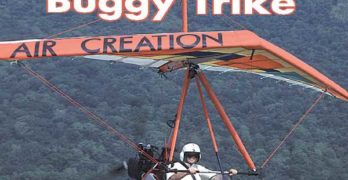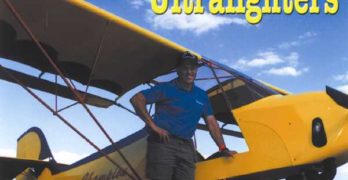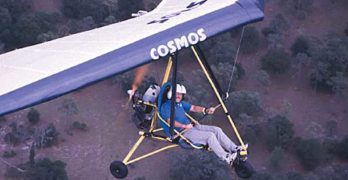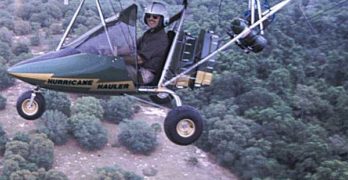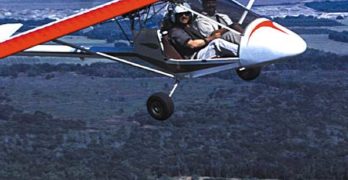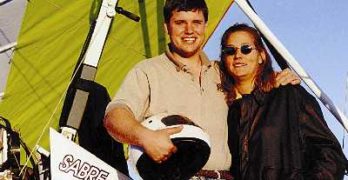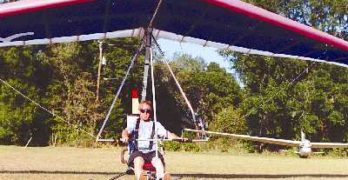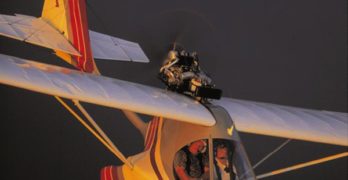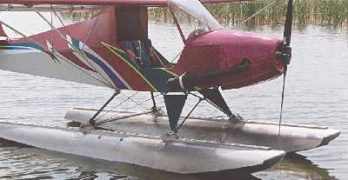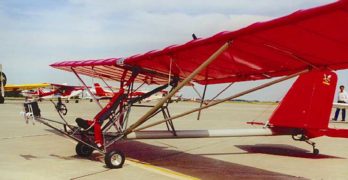Red is the best color for marketing reasons I was told by a Detroit car marketing executive with a half million a year salary. If you’ve seen a Chrysler TV ad recently, you can see they painted all the cars and trucks bright red.
Published in Light Sport and Ultralight Flying
Seating
Single- or 2-seat
Empty weight
386 pounds
Gross weight
772 pounds
Wingspan
30 feet
Wing area
135 square feet
Wing loading
5.7 pounds/sq ft
Wing
Trike
Height
11 feet 7 inches
Fuel Capacity
9.9 gallons
Kit type
Assembly
Build time
30-60 hours
Standard engine
Rotax 582
Power
65 horsepower
Power loading
11.9 pounds/hp
Cruise speed
56-74 mph
Never exceed speed
87 mph
Rate of climb at gross
1,477 fpm
Standard Features
Twin trike carriage, XP 12 double-surface wing, weight-shift control, hand and foot throttles, steerable nosewheel (push-left, go-right) with brake and mudguard, parking brake, wheel pants, pneumatic suspension, instrument panel, lap seat belt, regulator, water temp, Rotax C gearbox, intake/exhaust silencers, full fairing with windshield, 3-blade composite prop, back seat storage.


